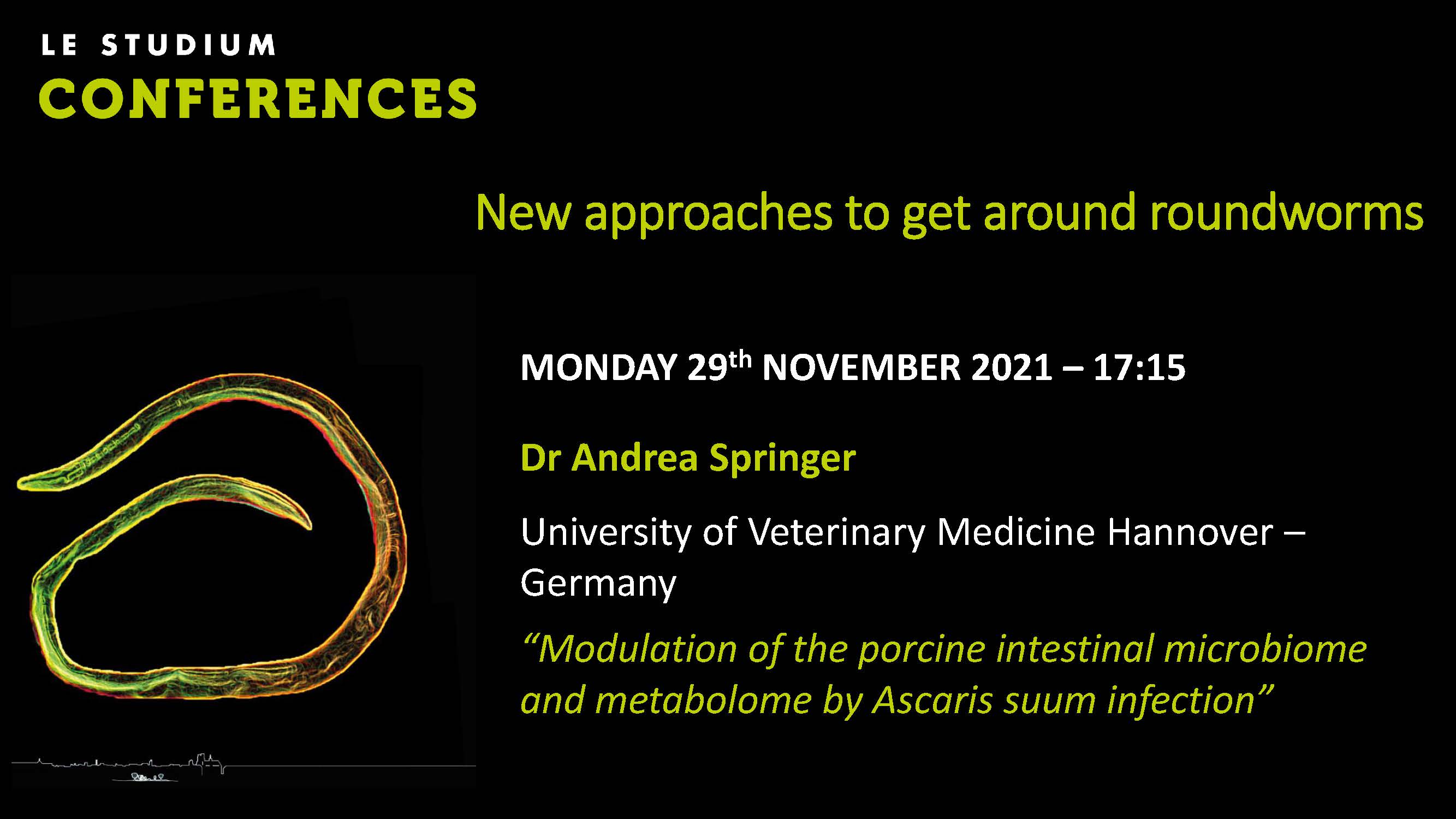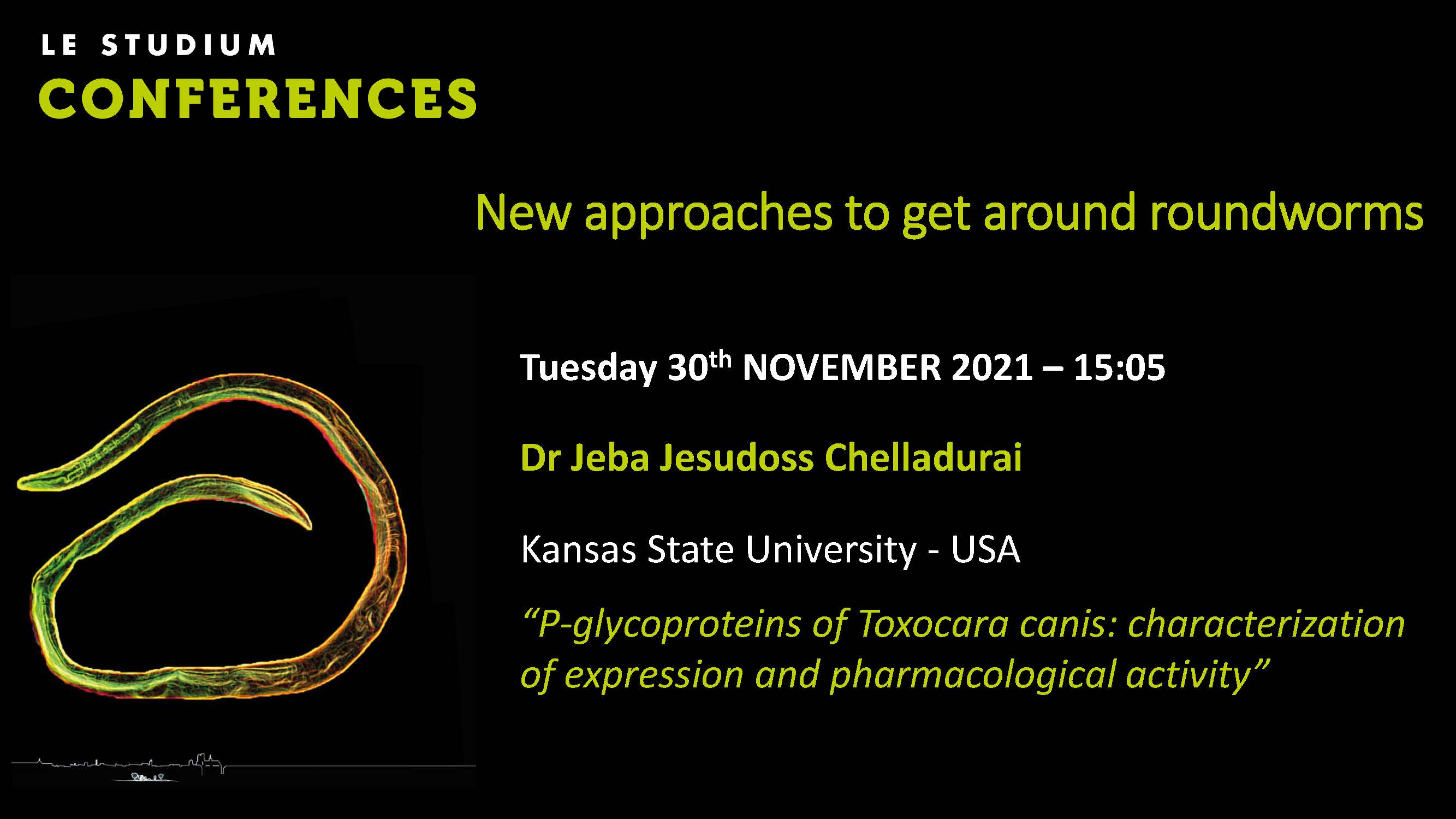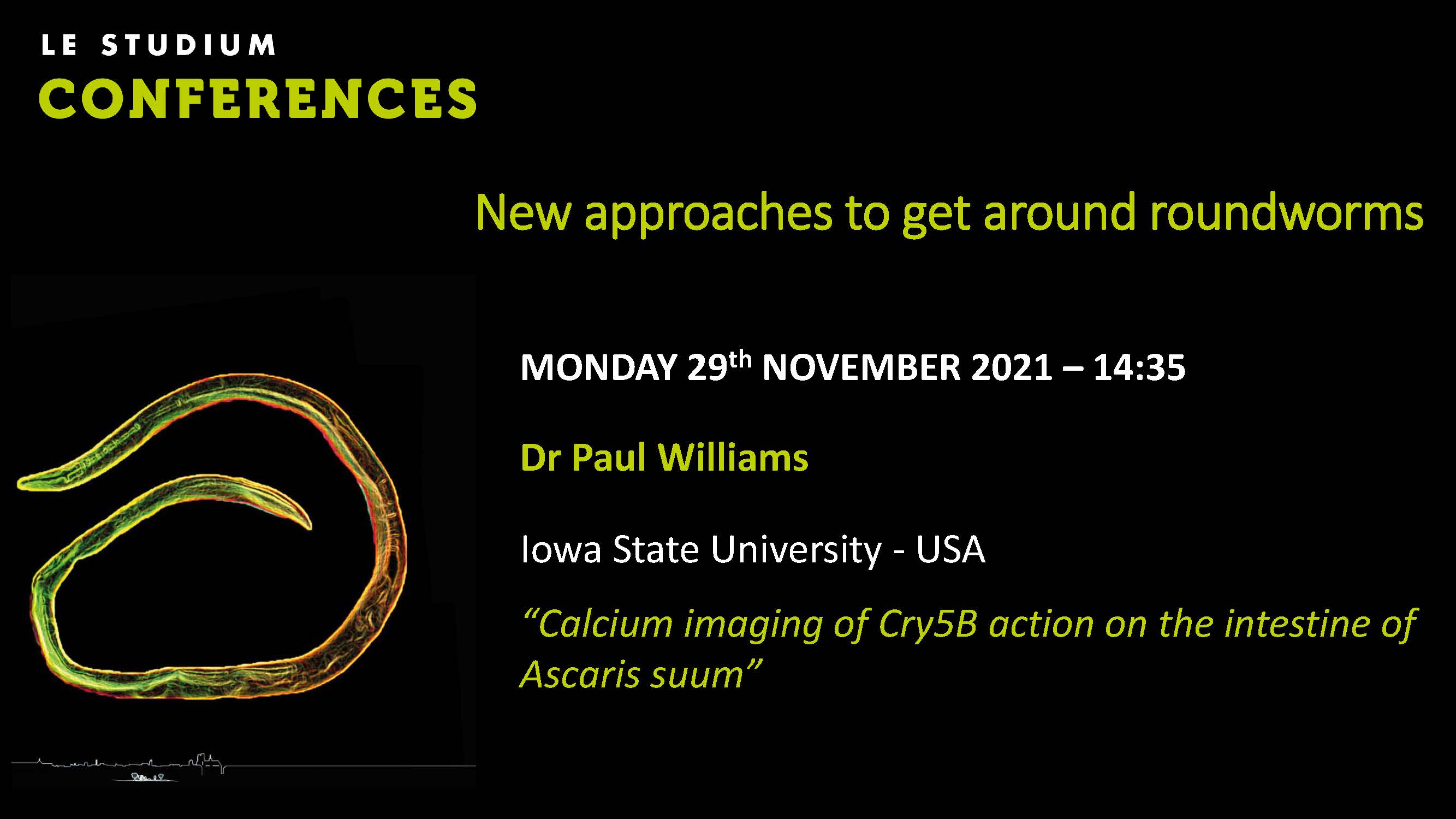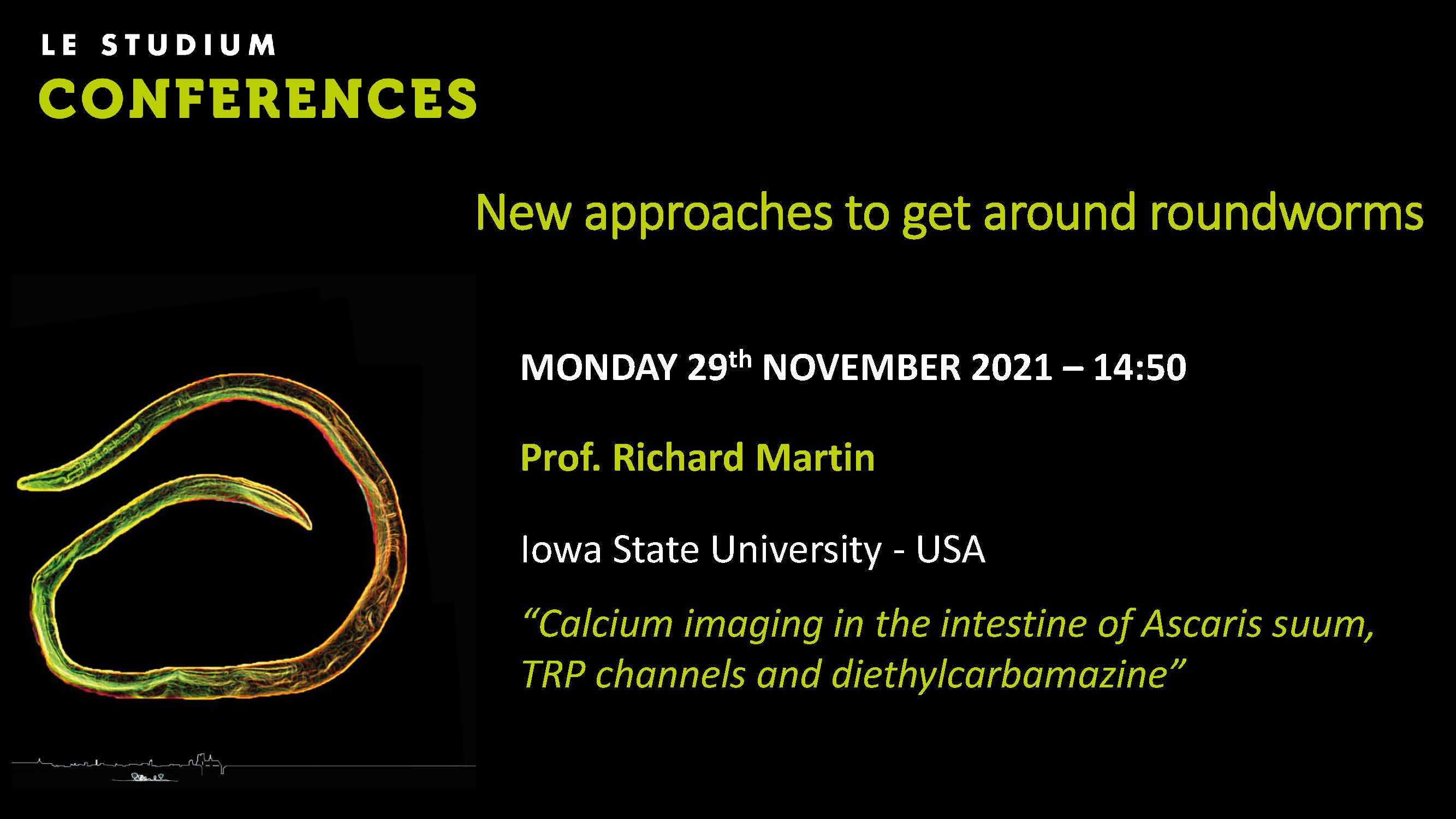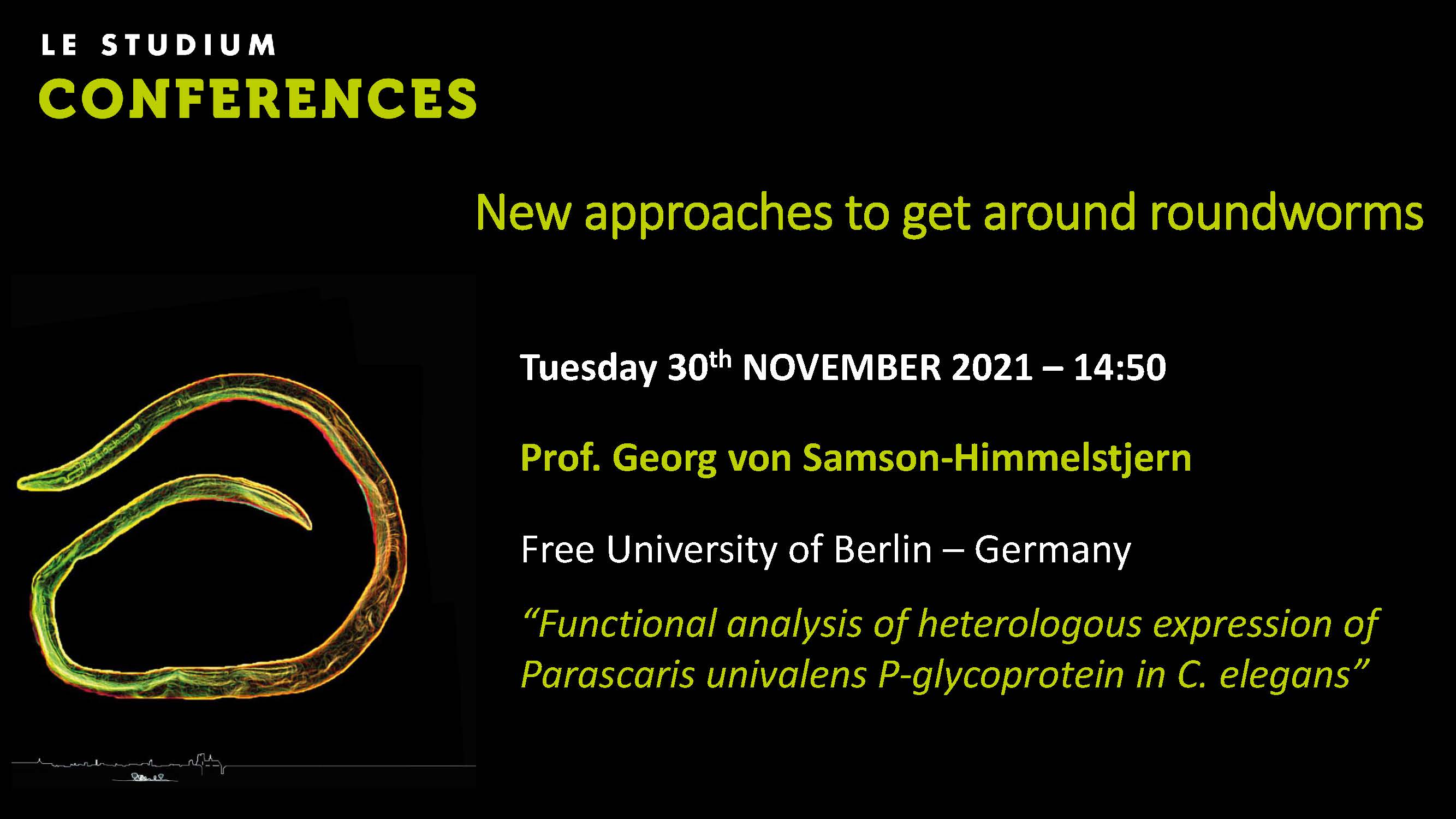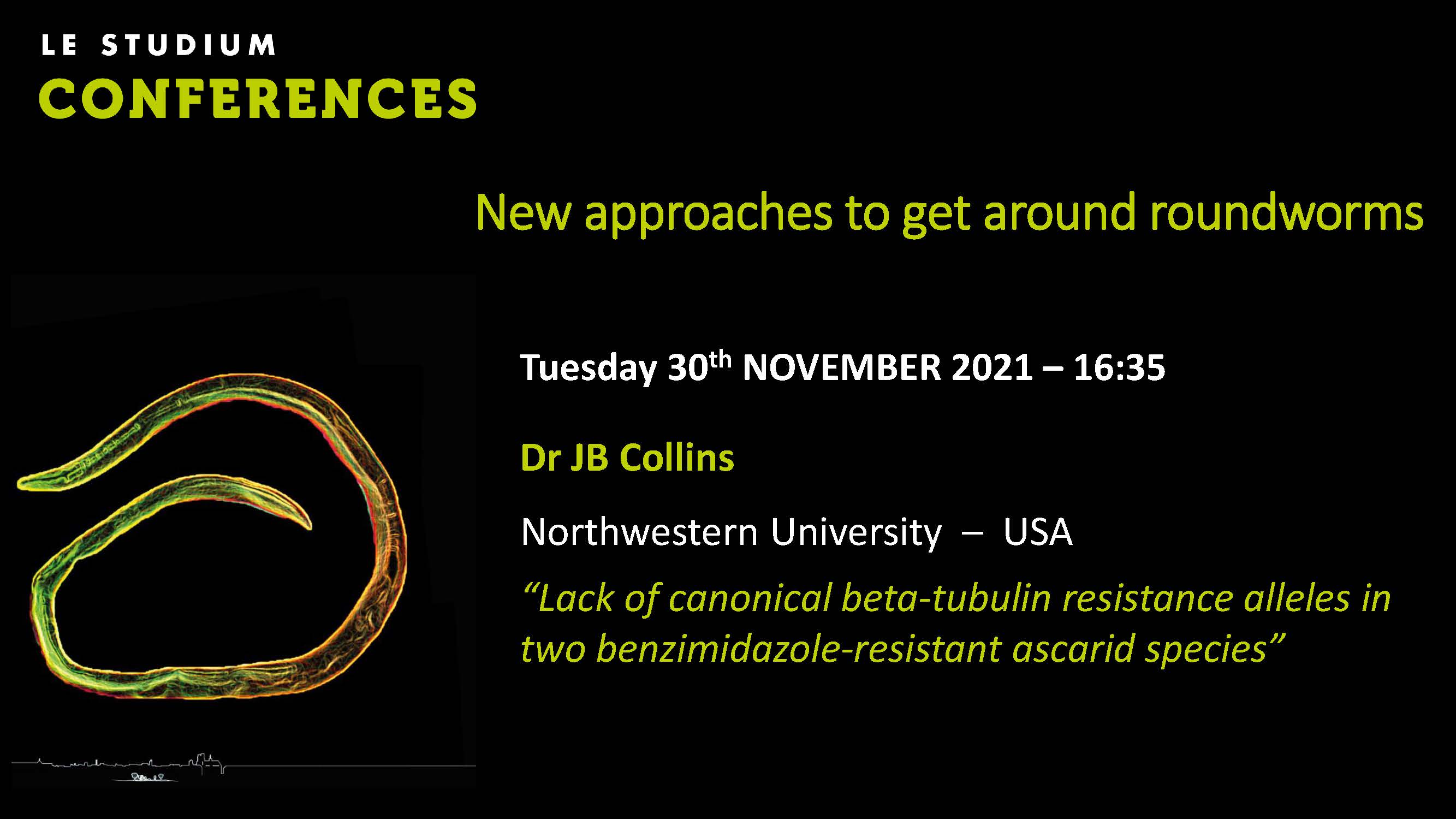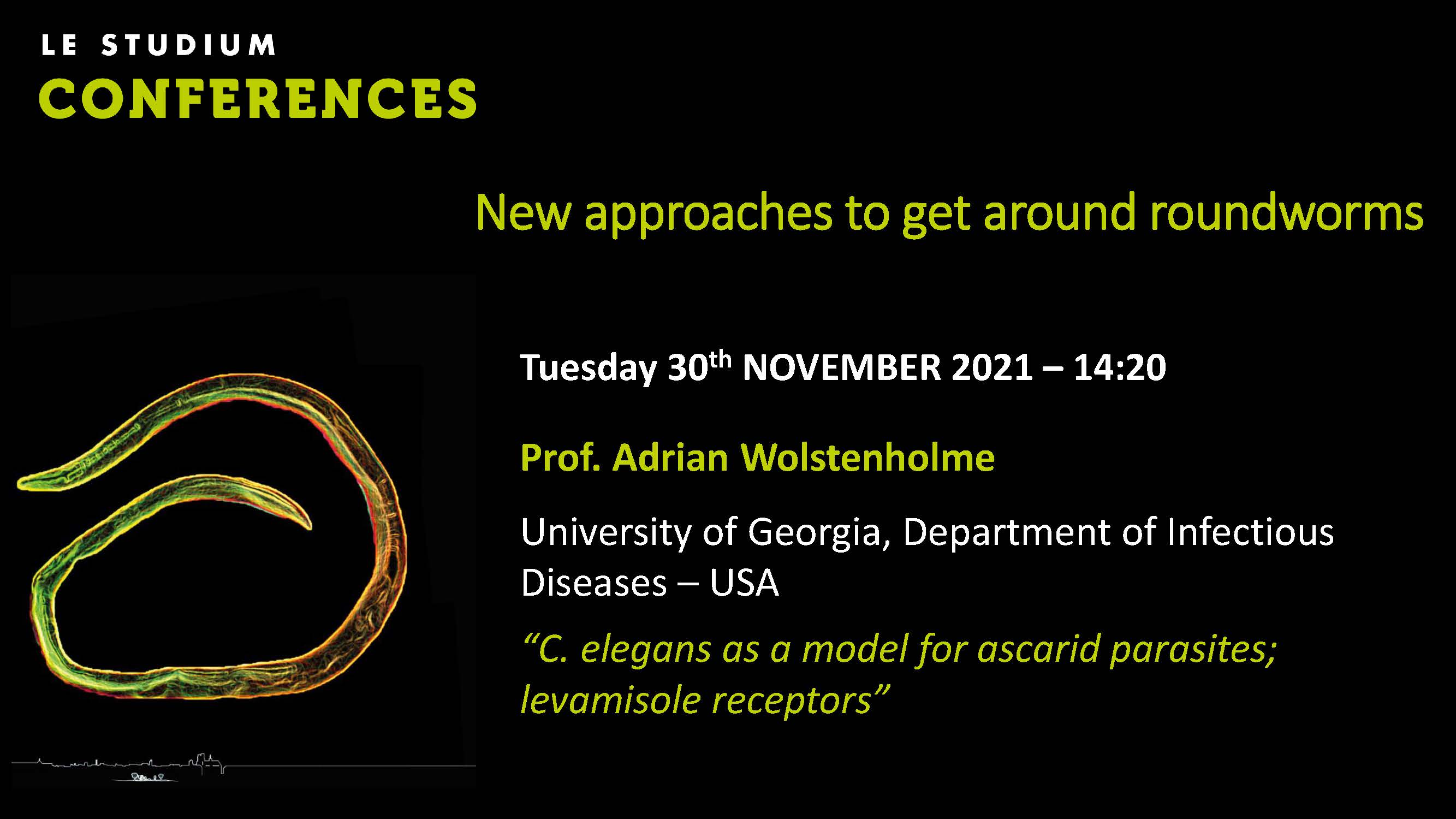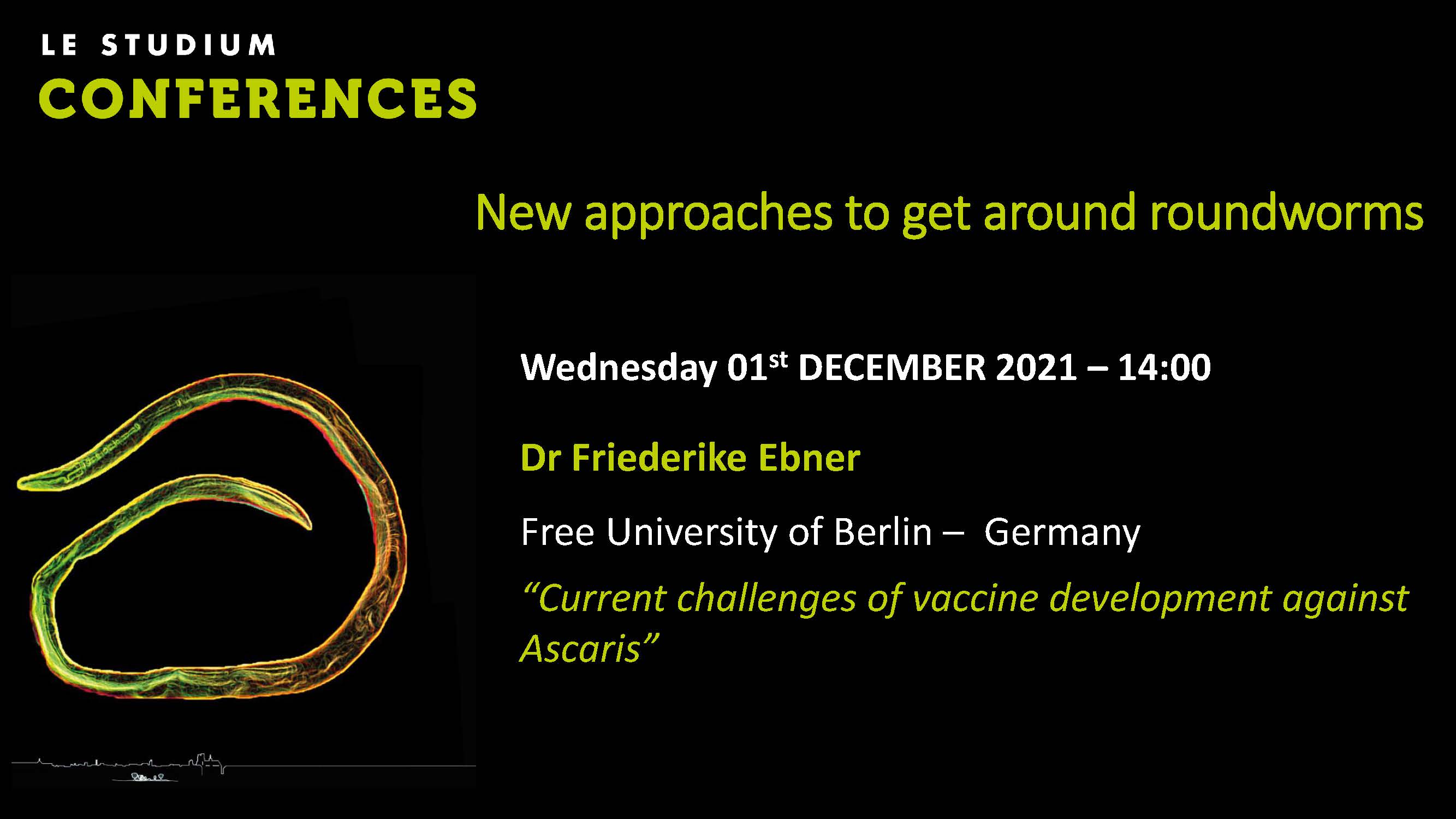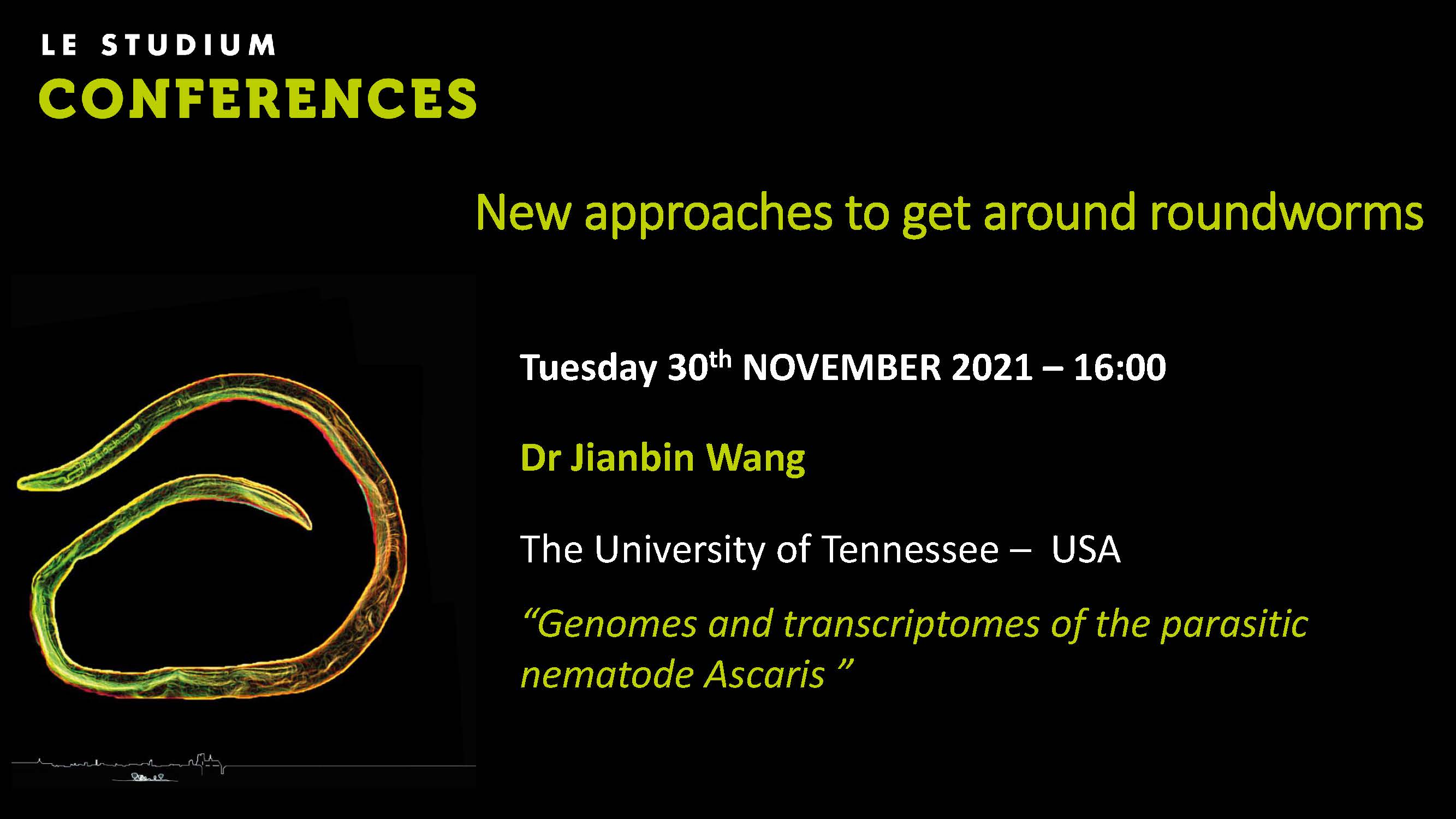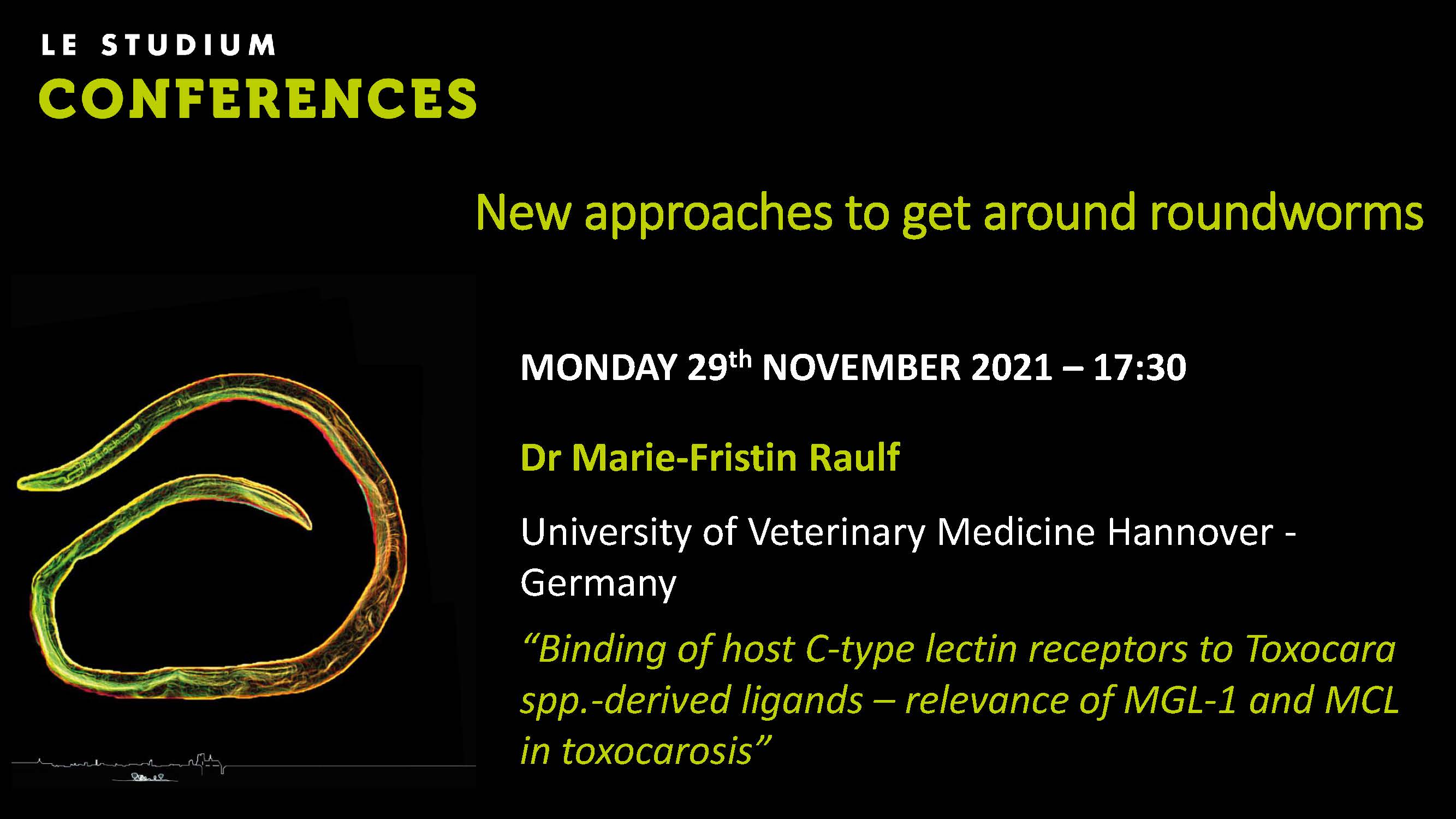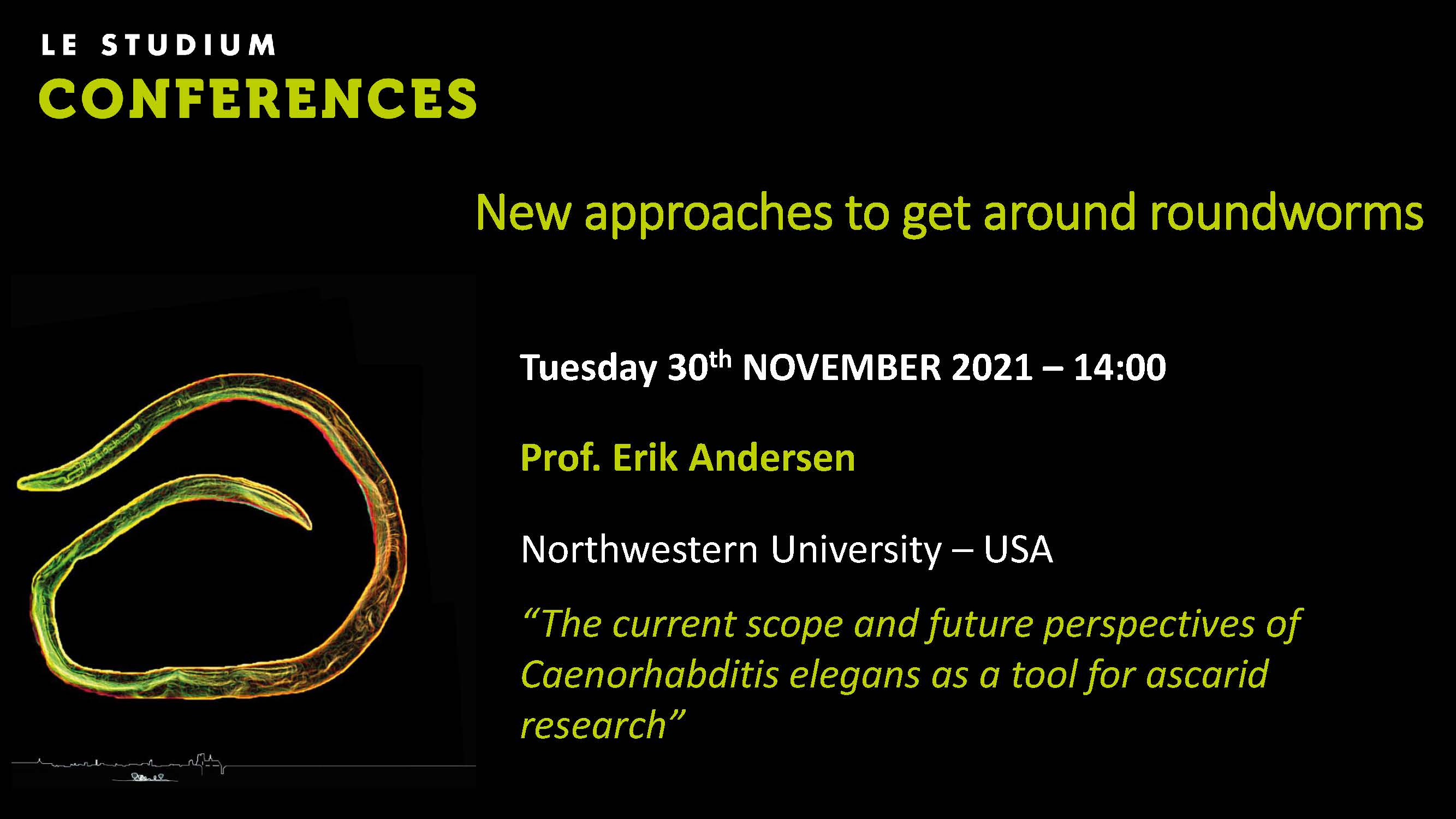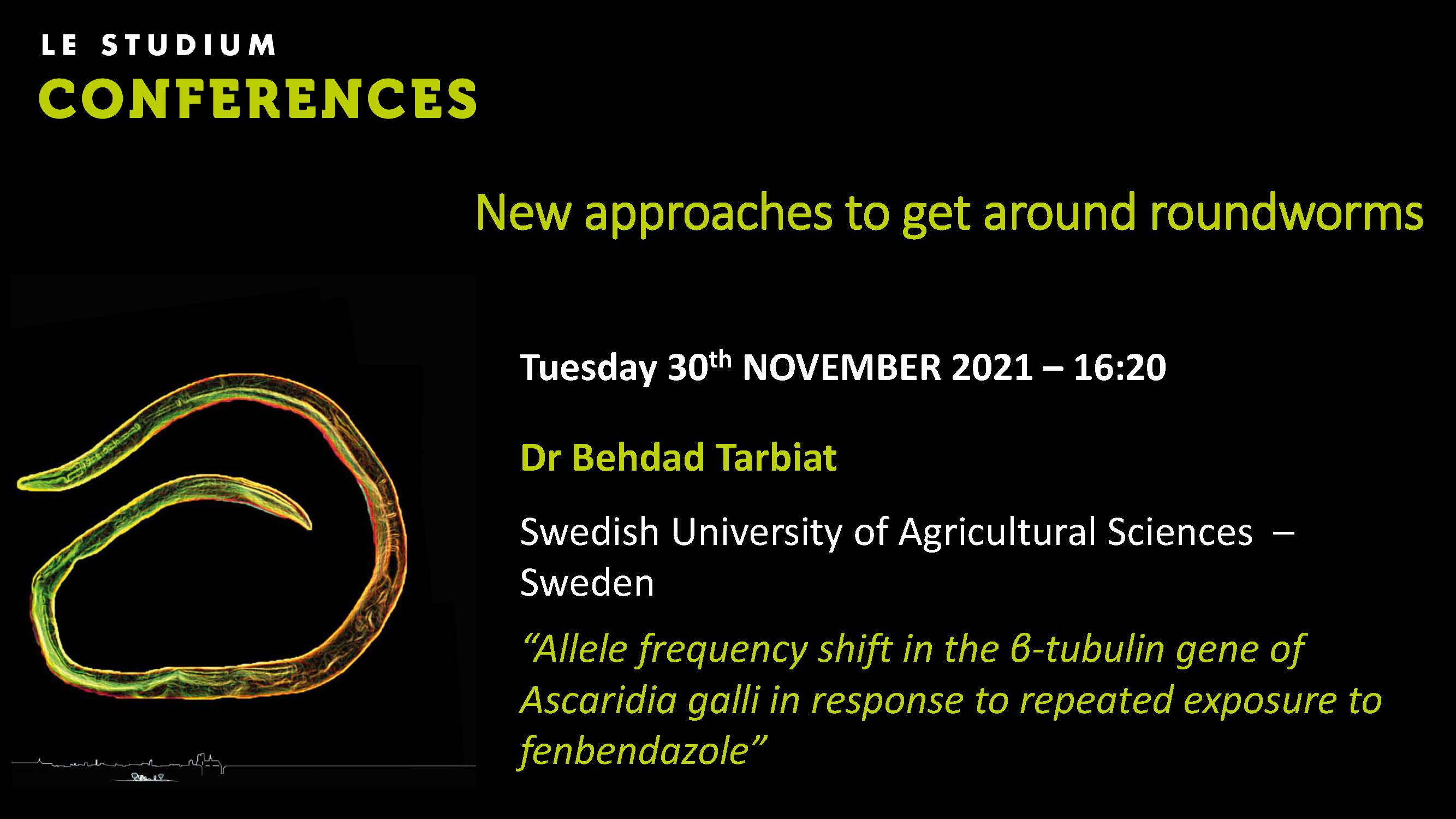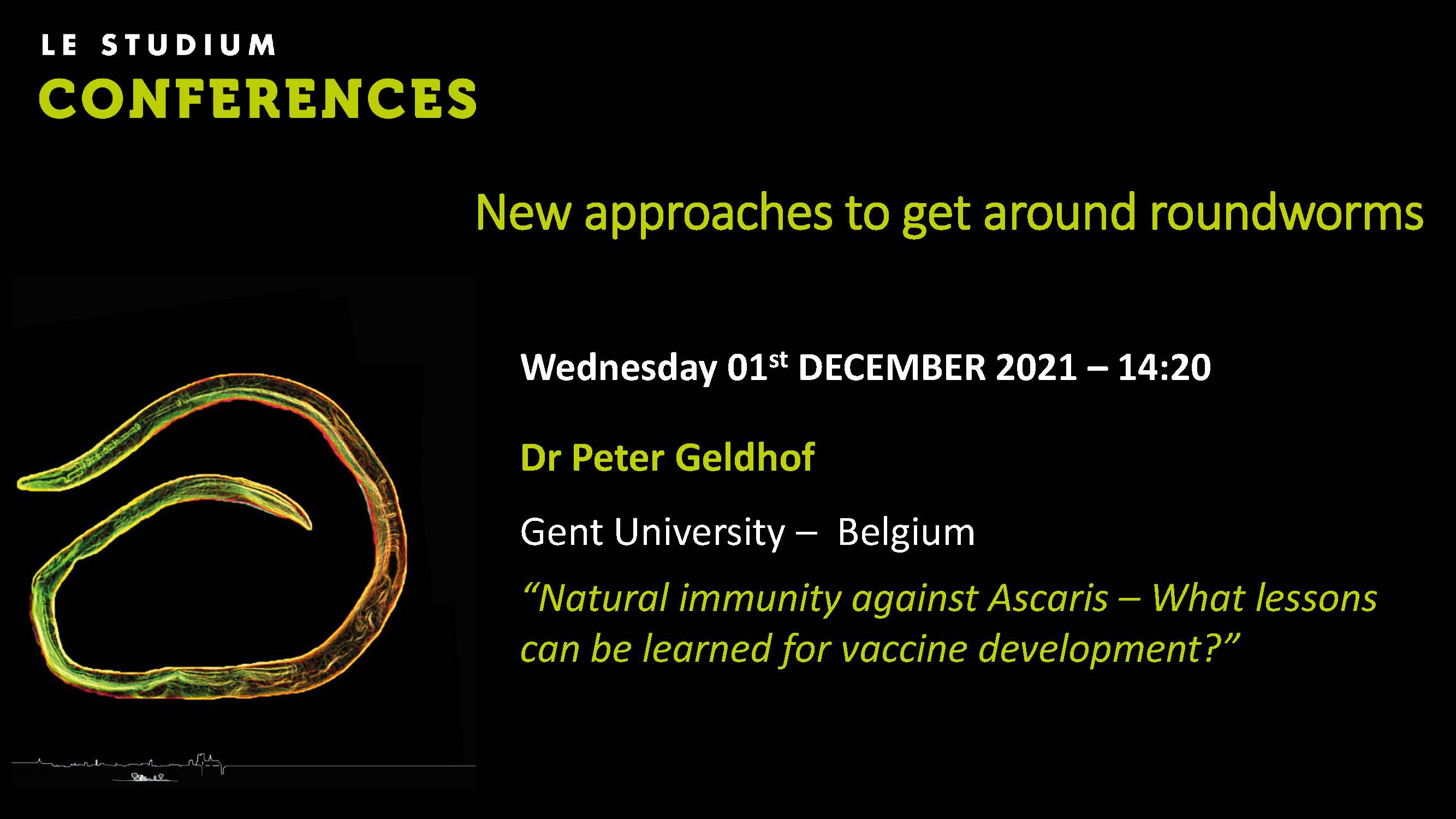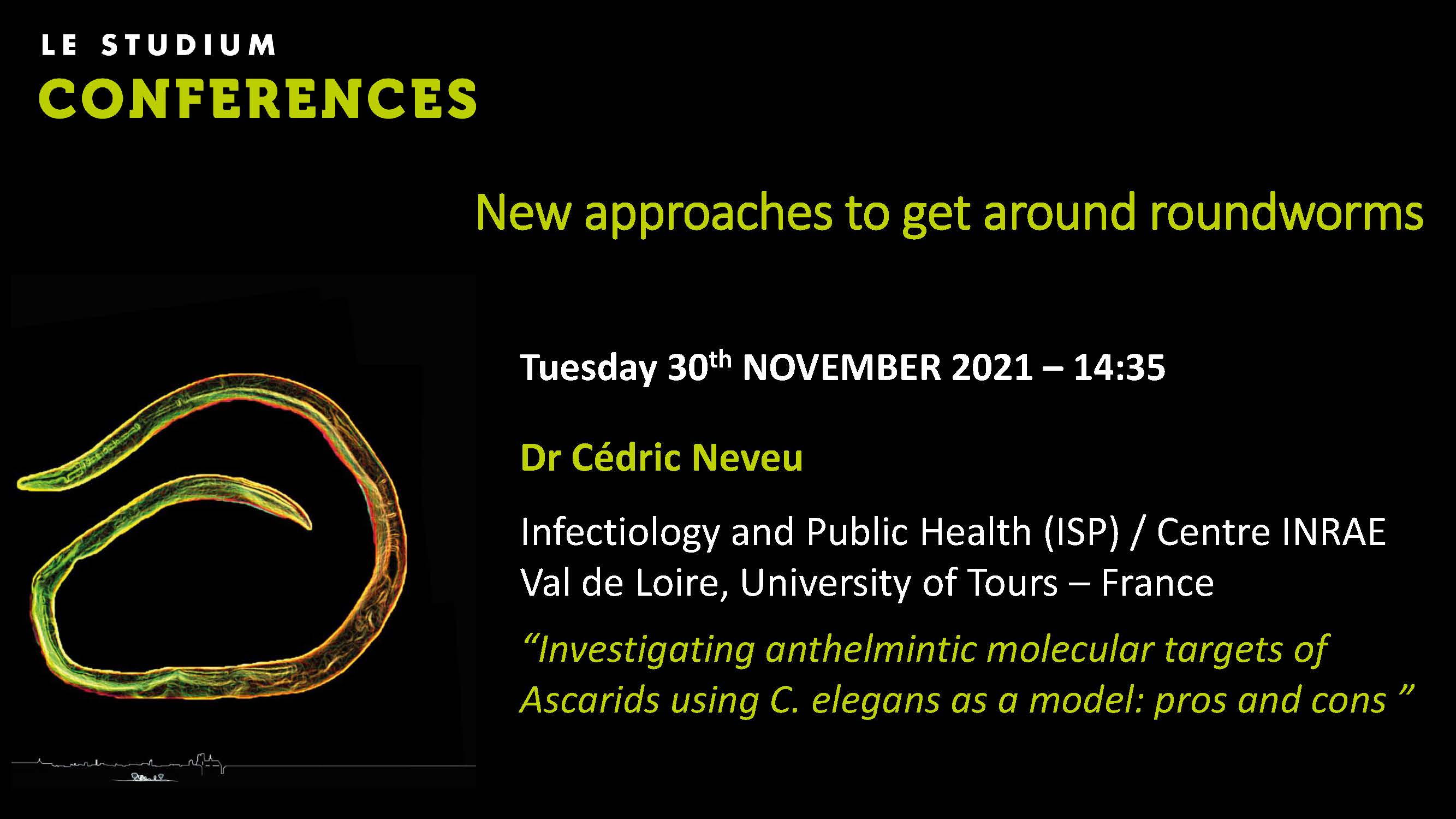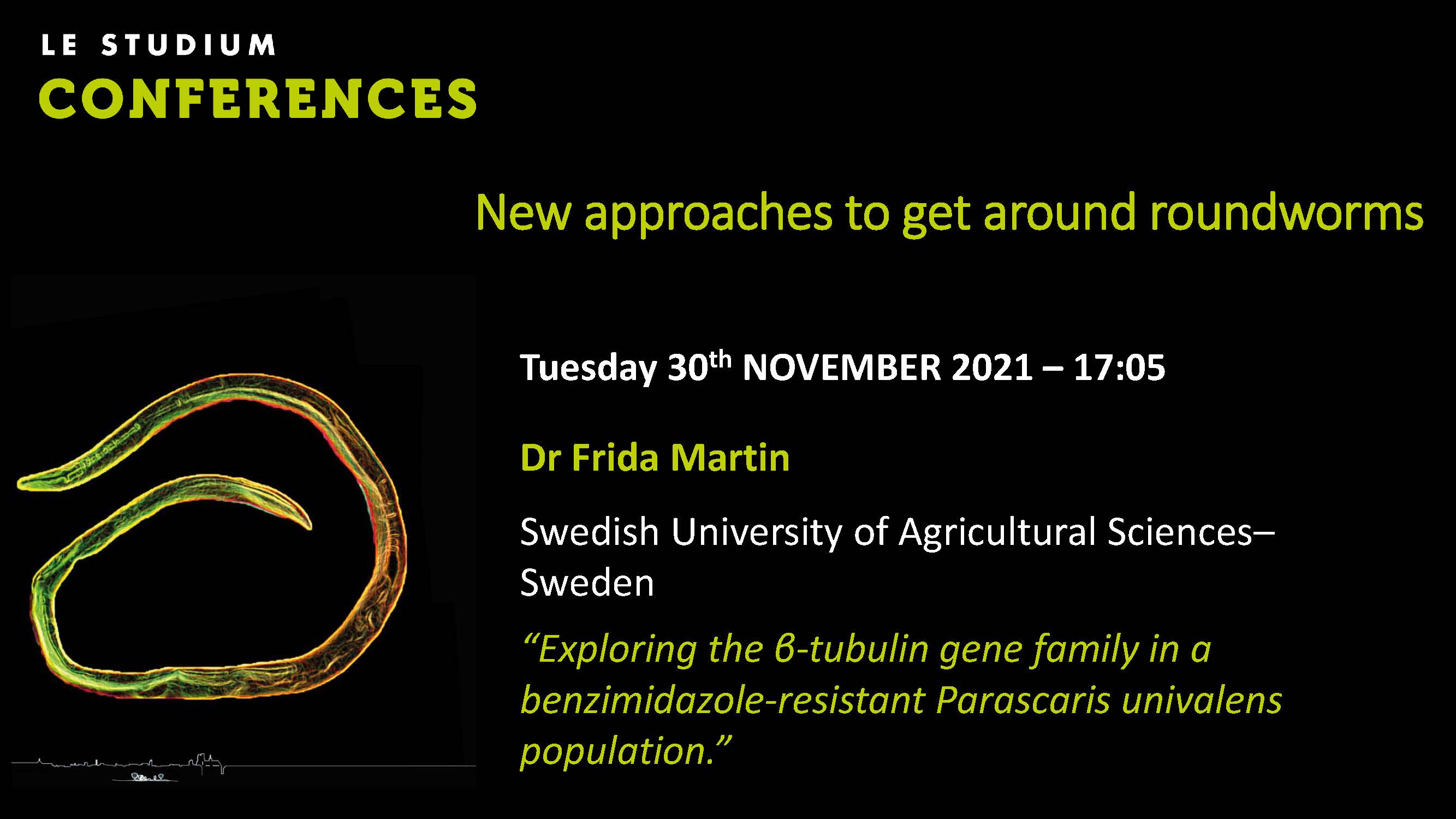Notice
Dr Francisco Evangelista - A bioinformatics approach to the discovery of vaccination targets in Ascaris lumbricoides and Ascaris suum.
- document 1 document 2 document 3
- niveau 1 niveau 2 niveau 3
Descriptif
Background: Ascariasis remains the most prevalent zoonotic helminthic disease affecting both humans and pigs and preventive chemotherapy continues to be the most widespread control method. With recent reports pointing to possible resistance to the commonly used drugs, the development of a vaccine as a complementary control method could be a viable alternative.<br>Methods: Three Ascaris proteomes predicted from whole-genome sequencing data were analysed for potential vaccination targets. Vaccination targets were identified using free and open-access bioinformatic tools (e.g. Vacceed, VaxiJen, Bepipred 2.0) which tested for different characteristics such as sub-cellular location, T-cell and B-cell molecular binding, antigenicity, allergenicity and phylogenetic relationship with other nematode proteins.
Results: From the initial 100,000 protein sequences analysed, four transmembrane proteins were predicted to be potential vaccine candidates. These targets were predicted to be non-allergen antigens and are expressed by both Ascaris species. The four proteins were identified as a Piezo protein, two voltage-dependent calcium channels and a protocadherin-like protein, expressed in either the muscle or ovaries of Ascaris and all contained high affinity epitopes for human T-cells and B-cells.
Conclusions: The use of a bioinformatics approach allowed the discovery of four new potential vaccination targets against ascariasis in humans and pigs.
Thème
Dans la même collection
-
Dr Andrea Springer - Modulation of the porcine intestinal microbiome and metabolome by Ascaris suum…
Ascaris suum affects feed conversion and weight gain of pigs, but effects on intestinal microbiota remain largely unexplored. Therefore, the intestinal microbiome and metabolome was assessed in pigs
-
Prof Lindy Holden-Dye - Ascaris physiology and pharmacology -what next? and how?
In this talk I will review the progress in providing insight into fundamental aspects of Ascaris physiology and pharmacology and the experimental approaches that have been adopted and developed to
-
Dr Jeba Jesudoss Chelladurai - P-glycoproteins of Toxocara canis: characterization of expression an…
The interaction of the macrocyclic lactones with P-glycoprotein have been well-characterized in different ascarids and have been implicated in drug resistance. While adult stages of the canine
-
Dr Paul Williams - Calcium imaging of Cry5B action on the intestine of Ascaris suum
Crystal (Cry) proteins from Bacillus thuringiensis are used as effective insecticides. These pore forming toxins act within the midgut of insects killing them. Cry5B, has been found to target and
-
Sara Roose - New insights into the use of serology as a diagnostic tool for Ascaris infections in h…
To monitor and evaluate mass drug administration (MDA) programs for soil-transmitted helminths (STHs) the diagnostic standard is the microscopic detection of STH specific eggs in stool smears (Kato-
-
Prof. Richard Martin - Calcium imaging in the intestine of Ascaris suum, TRP channels and diethylca…
The intestine of nematode parasites is involved in more than digestion, absorption and storage of nutrients. It is involved in vesicular trafficking, ageing, innate immunity, drug metabolism and
-
Prof. Georg von Samson-Himmelstjern - Functional analysis of heterologous expression of Parascaris …
This presentation will provide an overview on recent investigations concerning the P-glycoprotein gene family in the equine roundworm Parascaris univalens. As prominent members of the ATP-Binding
-
Dr JB Collins - Lack of canonical beta-tubulin resistance alleles in two benzimidazole-resistant as…
Management of nematode parasites of veterinary importance has become complicated because of the development of anthelmintic resistance. Resistance to benzimidazoles (BZ) is the most well characterized
-
Prof. Adrian Wolstenholme - C. elegans as a model for ascarid parasites; levamisole receptors
Ligand-gated ion channels provide an excellent test for any expression system and for C. elegans as a model for parasitic nematode species, including the ascarids. They are complex proteins made of
-
Dr Friederike Ebner - Current challenges of vaccine development against Ascaris
For more than half a century, scientists have been looking for prevention strategies against Ascarids, however, we still lack fully effective vaccines to protect both humans and veterinary species.
-
Dr Jianbin Wang - Genomes and transcriptomes of the parasitic nematode Ascaris
Nematodes of the genus Ascaris are important parasites of humans and swine, and related genera (Parascaris, Toxocara, and Baylisascaris) infect mammals of veterinary interest. Over the last decade,
-
Marie-Kristin Raulf - Binding of host C-type lectin receptors to Toxocara spp.-derived ligands – re…
Toxocara canis and Toxocara cati are worldwide-distributed zoonotic intestinal helminths with frequent exposure to humans in which they can cause severe disease pathology. Upon infection, initial
Sur le même thème
-
Sara Roose - New insights into the use of serology as a diagnostic tool for Ascaris infections in h…
To monitor and evaluate mass drug administration (MDA) programs for soil-transmitted helminths (STHs) the diagnostic standard is the microscopic detection of STH specific eggs in stool smears (Kato-
-
Prof Lindy Holden-Dye - Ascaris physiology and pharmacology -what next? and how?
In this talk I will review the progress in providing insight into fundamental aspects of Ascaris physiology and pharmacology and the experimental approaches that have been adopted and developed to
-
Dr Andrea Springer - Modulation of the porcine intestinal microbiome and metabolome by Ascaris suum…
Ascaris suum affects feed conversion and weight gain of pigs, but effects on intestinal microbiota remain largely unexplored. Therefore, the intestinal microbiome and metabolome was assessed in pigs
-
Prof. Richard Martin - Calcium imaging in the intestine of Ascaris suum, TRP channels and diethylca…
The intestine of nematode parasites is involved in more than digestion, absorption and storage of nutrients. It is involved in vesicular trafficking, ageing, innate immunity, drug metabolism and
-
Prof Erik Anderson - The current scope and future perspectives of Caenorhabditis elegans as a tool …
Ascarid parasites cause a massive burden on people in the developing world and on veterinary animals worldwide. We use a limited arsenal of anthelmintics to treat these infections. As the use of
-
Dr Behdad Tarbiat -Allele frequency shift in the β-tubulin gene of Ascaridia galli in response to r…
Despite global spread of anthelmintic resistance in livestock, there has been little discussion about the development of AR in poultry. Ascaridia galli has become ubiquitous in layers due to the ban
-
Dr Friederike Ebner - Current challenges of vaccine development against Ascaris
For more than half a century, scientists have been looking for prevention strategies against Ascarids, however, we still lack fully effective vaccines to protect both humans and veterinary species.
-
Prof. Adrian Wolstenholme - C. elegans as a model for ascarid parasites; levamisole receptors
Ligand-gated ion channels provide an excellent test for any expression system and for C. elegans as a model for parasitic nematode species, including the ascarids. They are complex proteins made of
-
Dr JB Collins - Lack of canonical beta-tubulin resistance alleles in two benzimidazole-resistant as…
Management of nematode parasites of veterinary importance has become complicated because of the development of anthelmintic resistance. Resistance to benzimidazoles (BZ) is the most well characterized
-
Dr Peter Geldhof - Natural immunity against Ascaris – What lessons can be learned for vaccine devel…
Ascaris lumbricoides and A. suum are large roundworm parasites that thrives in the small intestine of humans and pigs, respectively. The control of ascariasis is currently completely reliant on
-
-
Frida Martin - Exploring the β-tubulin gene family in a benzimidazole-resistant Parascaris univalen…
Benzimidazole (BZ) resistance is rare in ascarids in contrast to strongyle parasites where this resistance is widespread. In strongyles, single nucleotide polymorphisms (SNPs) at codons 167, 198 and

